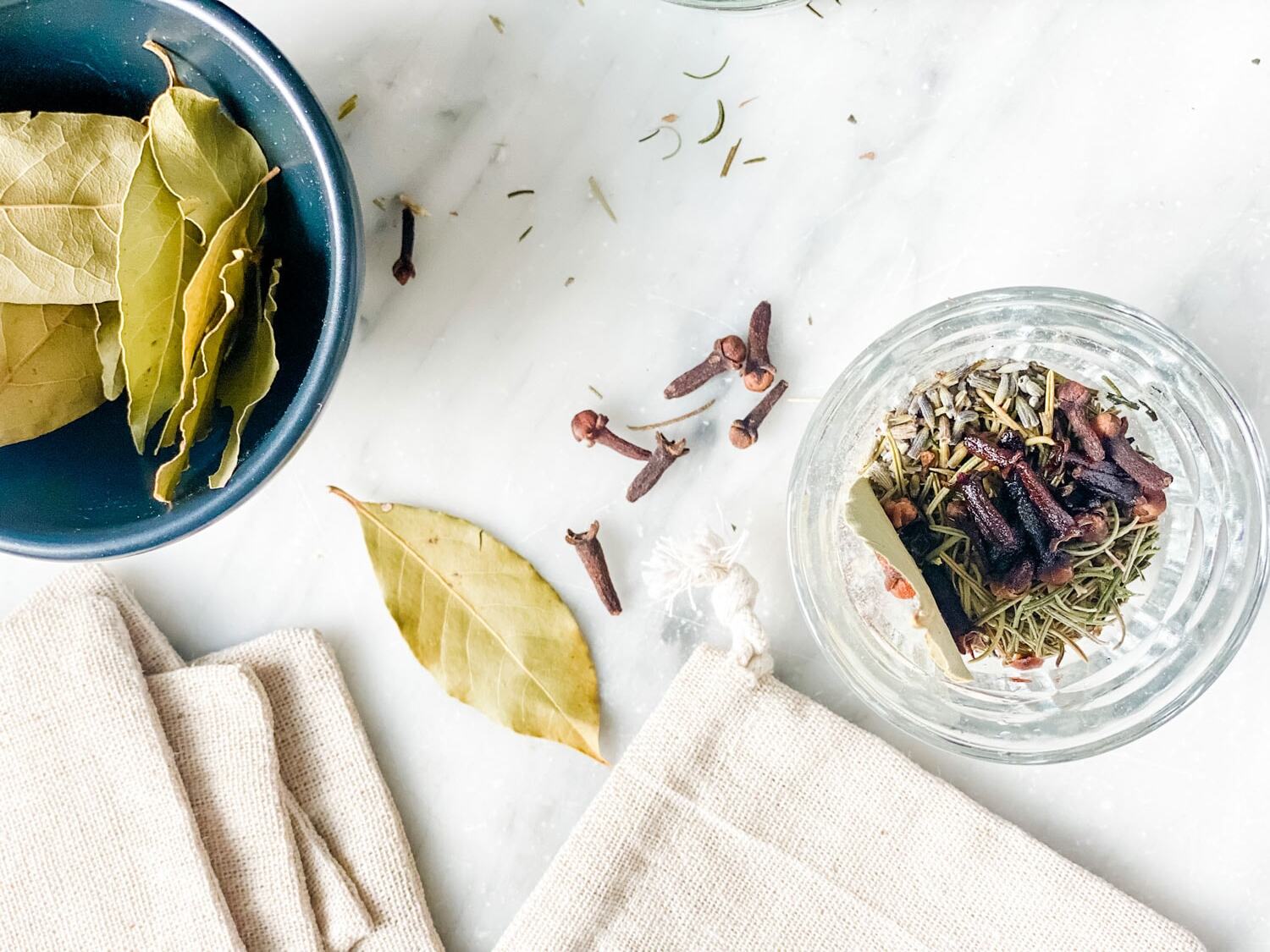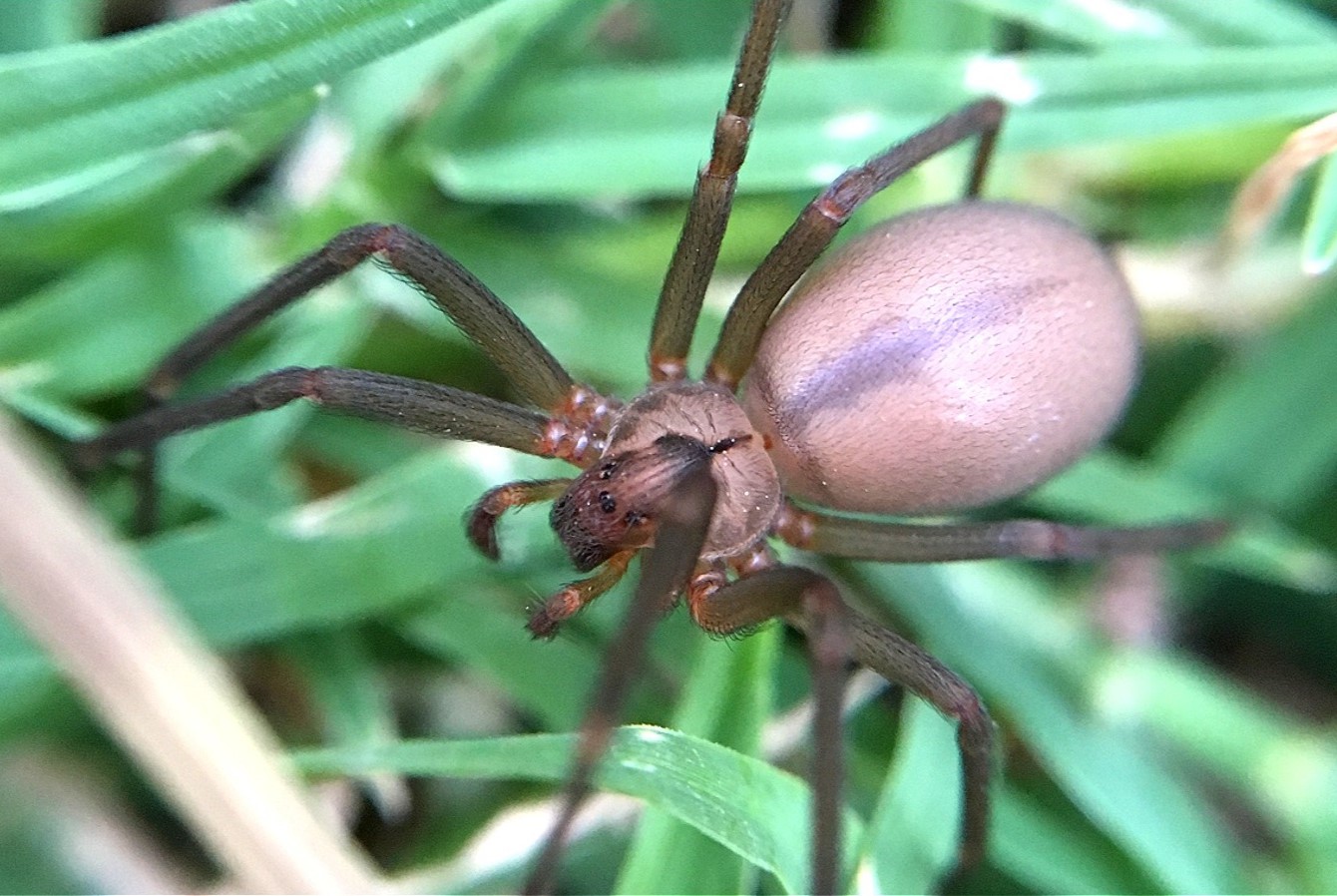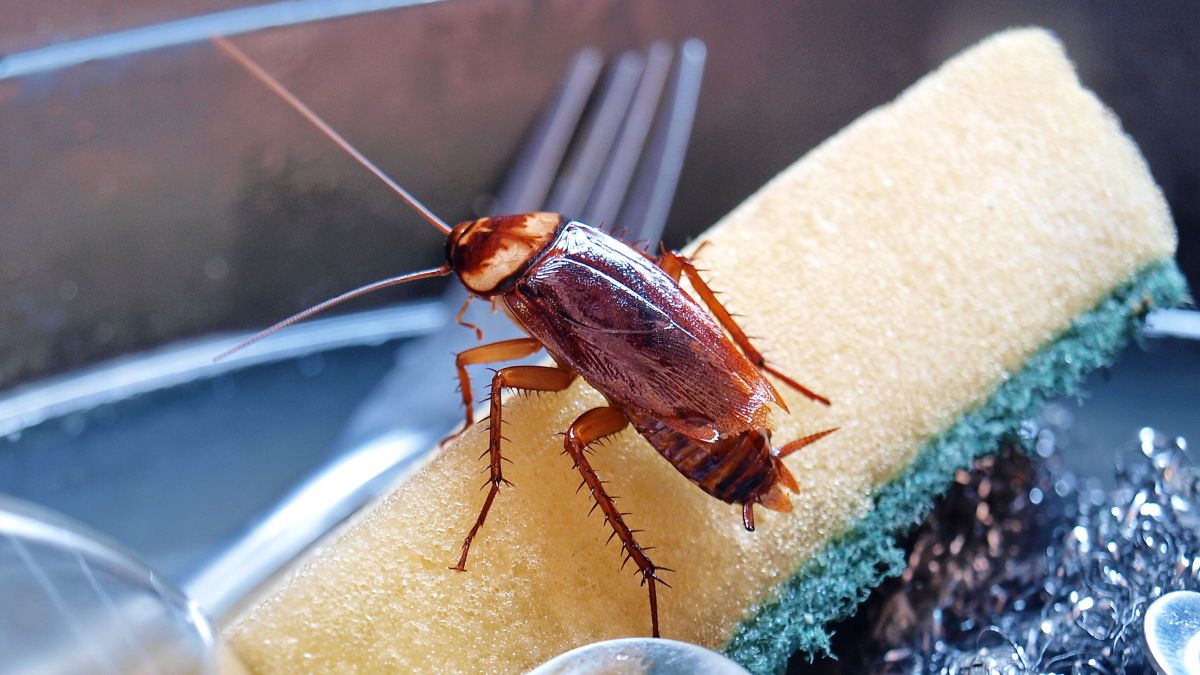Home>Interior Design>Homemade Moth Repellent – Get Rid Of Moths, Naturally


Interior Design
Homemade Moth Repellent – Get Rid Of Moths, Naturally
Modified: August 17, 2024
Say goodbye to moths in your home with our homemade moth repellent. Discover natural ways to repel moths and protect your interior design.
(Many of the links in this article redirect to a specific reviewed product. Your purchase of these products through affiliate links helps to generate commission for Storables.com, at no extra cost. Learn more)
Introduction
Welcome to the world of interior design, where creativity and functionality merge to create beautiful living spaces. If you’re passionate about making your home a reflection of your style and personality, you’re in the right place. In this article, we will explore the fascinating world of interior design and provide you with valuable insights and tips to help you create your dream home.
Interior design is much more than just choosing colors and furniture. It is the art of transforming a space into a harmonious and functional environment that meets the needs and desires of its inhabitants. Whether you’re looking to revamp a single room or embark on a complete home renovation, understanding the principles of interior design will guide you in making informed decisions and achieving your desired outcome.
One of the key aspects of interior design is creating a cohesive and visually pleasing aesthetic. This involves considering factors such as color schemes, furniture placement, lighting, and accessories. A well-designed space not only looks great but also supports the daily activities and lifestyle of its occupants.
Another crucial element of interior design is understanding the importance of functionality. While aesthetics play a significant role, it’s essential to create a space that is practical and efficient. This means considering factors such as traffic flow, storage solutions, and the needs of the individuals who will be using the space.
When designing a room or a home, it’s essential to ensure that you strike the right balance between form and function. This can be achieved by carefully planning the layout, selecting appropriate furniture and materials, and considering the natural lighting and ventilation in the space.
Interior design is a constantly evolving field, influenced by current trends, technological advancements, cultural shifts, and individual preferences. It’s important to stay updated with the latest design concepts and techniques to create timeless and stylish spaces.
In this article, we will delve into various aspects of interior design, including color psychology, furniture selection, lighting design, and tips for maximizing small spaces. We will also provide you with practical advice on how to approach different rooms in your home, such as the living room, bedroom, kitchen, and bathroom.
Whether you’re a seasoned interior design enthusiast or a complete beginner, this article aims to inspire and guide you on your journey to creating a home that is both aesthetically pleasing and functional. So let’s dive in and explore the exciting world of interior design!
Key Takeaways:
- Create a harmonious and functional living space by balancing aesthetics and functionality through interior design principles, color psychology, and furniture selection.
- Protect your clothes and textiles from moth damage with cost-effective and eco-friendly homemade moth repellents using natural ingredients like lavender, cedar, citrus, cloves, rosemary, and mint.
Read more: How To Get Rid Of Moths In Wardrobe
Why Use Homemade Moth Repellent?
Moths are not only a nuisance but also a potential threat to your clothes, linens, and other textiles in your home. These tiny insects are attracted to natural fibers, such as wool and silk, and their larvae can cause significant damage if left unchecked. While there are commercial moth repellents available on the market, opting for homemade moth repellent offers several advantages.
1. Natural Ingredients: Homemade moth repellents are made from natural ingredients, which means they are free from harmful chemicals. This is especially beneficial if you have children or pets in your home, as it minimizes their exposure to potentially toxic substances.
2. Cost-Effective: Making your own moth repellent can save you money in the long run. Many of the ingredients used in homemade formulas, such as lavender, cedar, and cloves, are readily available and affordable. You can also customize the recipe to suit your preferences and budget.
3. Easy to Make: Homemade moth repellents are simple to make with ingredients that are likely already in your pantry or garden. With just a few minutes of preparation, you can create an effective solution to keep moths at bay.
4. Eco-Friendly: By using homemade moth repellent, you are promoting sustainability and reducing your environmental footprint. Commercial moth repellents often come in plastic packaging and contain synthetic chemicals that can be harmful to the environment when disposed of.
5. Pleasant Fragrance: Many homemade moth repellents are infused with natural scents, such as lavender or cedar, which not only repel moths but also leave your clothes and linens smelling fresh and pleasant.
6. Versatility: Homemade moth repellents can be used on a variety of items, including clothing, bedding, carpets, and storage areas. This makes them a versatile solution for protecting your belongings from moth damage.
While homemade moth repellents can be effective, it’s important to note that they may not offer the same longevity and potency as commercial alternatives. It’s important to regularly check and refresh your homemade repellents to ensure their effectiveness.
Now that you understand the benefits of homemade moth repellents, let’s explore the different types of moths commonly found in homes and the natural ingredients you can use to repel them effectively.
Common Types of Moths
Moths are a diverse group of insects with various species found around the world. While not all moths are destructive, several species are known to cause damage to fabrics, textiles, and stored food products. Understanding the common types of moths that can invade your home will help you identify and address any infestations effectively.
1. Clothes Moths: Clothes moths are one of the most common types of moths that infest homes. Two species, the webbing clothes moth and the casemaking clothes moth, are notorious for feeding on natural fibers like wool, silk, fur, and feathers. These moths lay their eggs on clothing and linens, and the resulting larvae feed on the fibers, leaving behind holes and damage.
2. Pantry Moths: Pantry moths, also known as Indian meal moths, are a common nuisance in kitchens and pantry areas. These moths lay their eggs on stored food products like grains, flours, nuts, and dried fruits. The larvae infest the food, creating webbing and causing contamination. Pantry moths can quickly spread to other food items if not addressed promptly.
3. Carpet Moths: Carpet moths, also called carpet beetles, are small insects that infest carpets, rugs, upholstery, and other fabric surfaces. They are attracted to natural fibers like wool and can cause extensive damage over time. Carpet moth larvae feed on the fibers, leading to patches of missing or damaged carpet.
4. Grain Moths: Grain moths, also known as meal moths or flour moths, are common pests in stored grain products. They infest grains, flours, cereals, and other dried food items. Grain moth larvae can contaminate the food and make it unfit for consumption.
5. Gypsy Moths: Gypsy moths are outdoor pests that can be problematic in wooded areas surrounding homes. While they don’t directly infest homes, their caterpillars can cause defoliation and damage to trees, leading to potential pest control issues in the future.
Identifying the specific type of moth infestation in your home is crucial for implementing the appropriate control measures. It’s essential to regularly inspect your clothing, fabrics, and stored food products for signs of moth activity, such as holes, webbing, and larvae. If you suspect a moth infestation, it is recommended to take immediate action to prevent further damage.
Now that we have discussed the common types of moths, let’s explore the natural ingredients you can use to create homemade moth repellents that effectively deter these pests from infesting your home.
Natural Ingredients for Homemade Moth Repellent
When it comes to keeping moths at bay, nature provides us with a range of ingredients that have repellent properties. These natural ingredients are not only effective in deterring moths but also safe for use in and around your home. Here are some commonly used natural ingredients for homemade moth repellents:
1. Lavender: Lavender is a popular choice for repelling moths due to its strong scent. Moths are known to dislike the fragrance of lavender, making it an effective deterrent. You can use dried lavender flowers or essential oil to create a homemade moth repellent.
2. Cedar: Cedar wood and cedar oil are widely regarded as excellent natural repellents for various insects, including moths. The scent of cedar acts as a deterrent and helps protect your clothes and other textiles from moth damage. Cedar blocks or shavings can be placed in drawers, closets, or storage containers to repel moths.
3. Citrus Peel: The strong scent of citrus fruits, such as oranges and lemons, can also repel moths. You can use dried citrus peels or make a citrus-infused spray by boiling citrus peels in water and straining the liquid.
4. Cloves: Cloves have a strong and pungent aroma that moths find unpleasant. You can create a sachet using whole cloves or mix clove essential oil with water to make a spray. Both options are effective in keeping moths away from your clothes and linens.
5. Rosemary: Rosemary is another herb with a powerful scent that moths dislike. You can use dried rosemary leaves or rosemary essential oil to create a moth repellent. Place sachets of dried rosemary or spray a mixture of rosemary oil and water in your closets and storage areas.
6. Mint: Mint leaves or mint essential oil can be used to create a homemade moth repellent. The strong scent of mint helps deter moths from infesting your clothing and other fabric items.
These natural ingredients can be used individually or in combination to create powerful moth repellents. Experiment with different combinations and find the scent that works best for you.
When using these ingredients, it’s important to note that their effectiveness may vary depending on the severity of the infestation and the specific species of moths. Regular monitoring and refreshing of the homemade moth repellent will be necessary to maintain its potency.
Now that you know the natural ingredients for homemade moth repellents, let’s dive into some recipes that you can easily make at home to keep moths away.
Use cedar chips or blocks in your closet or drawers to repel moths. The natural oils in cedar are a natural moth repellent.
Recipes for Homemade Moth Repellent
Creating your own homemade moth repellent is easy and cost-effective. By using natural ingredients, you can effectively repel moths from your home, protecting your clothes, linens, and other textiles. Here are a few simple recipes to try:
1. Lavender Sachets:
- Ingredients: dried lavender flowers, fabric pouches
- Instructions: Fill fabric pouches with dried lavender flowers and tie them securely. Place the sachets in your drawers, closets, and storage areas to repel moths.
2. Cedar Spray:
- Ingredients: cedar essential oil, water, spray bottle
- Instructions: Fill a spray bottle with water and add a few drops of cedar essential oil. Shake well to mix the ingredients. Spray the mixture on your clothes, linens, and storage areas to repel moths.
3. Citrus Peel Sachets:
- Ingredients: dried citrus peels, fabric pouches
- Instructions: Place dried citrus peels inside fabric pouches and secure them tightly. Put the sachets in your closets, drawers, and storage containers to keep moths away.
4. Clove Spray:
- Ingredients: clove essential oil, water, spray bottle
- Instructions: Mix a few drops of clove essential oil with water in a spray bottle. Shake well and spray the mixture in areas prone to moth infestation, such as closets, drawers, and storage spaces.
5. Rosemary Sachets:
- Ingredients: dried rosemary leaves, fabric pouches
- Instructions: Fill fabric pouches with dried rosemary leaves and tie them securely. Place the sachets in your closets, drawers, and storage areas to repel moths.
6. Mint Spray:
- Ingredients: mint essential oil, water, spray bottle
- Instructions: Add a few drops of mint essential oil to water in a spray bottle. Shake well and spray the mixture on clothes, linens, and storage areas to deter moths.
These recipes can be customized based on your preferences and the severity of the moth infestation. You can experiment with different combinations of natural ingredients to find what works best for you.
Remember to regularly check and refresh your homemade moth repellents to ensure their effectiveness. Additionally, it’s essential to maintain clean and organized storage areas to prevent moths from infesting your belongings.
Now that you have the recipes for homemade moth repellents, let’s explore how to use them effectively to keep moths away from your home.
Read more: Pantry Moth How To Get Rid Of
How to Use Homemade Moth Repellent Effectively
Using homemade moth repellent is a proactive way to protect your clothes, linens, and other textiles from moth damage. However, to ensure their effectiveness, it’s important to use these repellents correctly. Here are some tips on how to use homemade moth repellent effectively:
1. Identify Problem Areas: Before applying moth repellent, identify the areas in your home that are prone to moth infestations. This may include closets, drawers, storage containers, and areas where you store natural fibers like wool or silk.
2. Clean and Declutter: Before using moth repellent, clean and declutter the areas you are targeting. Vacuum carpets, wipe down surfaces, and remove any unnecessary items. Moths are attracted to dirt, dust, and organic matter, so keeping your storage areas clean and clutter-free will help reduce their appeal.
3. Apply Directly: Depending on the type of homemade moth repellent you are using, apply it directly to your clothes, linens, or storage areas. Spray the repellent onto fabrics, or place sachets in drawers and closets. Ensure that the repellent comes into contact with the items you want to protect.
4. Focus on Hotspots: Concentrate on areas that are most susceptible to moth activity. These hotspots may include locations where moths are commonly found, such as dark corners or areas where clothing is stored for long periods.
5. Refresh Regularly: Homemade moth repellents may lose their effectiveness over time. Refresh your repellent regularly by spraying or replacing sachets every few weeks or whenever you notice a decrease in fragrance. This will ensure a continuous, effective barrier against moths.
6. Monitor Infestation: Keep an eye out for any signs of moths, such as holes in clothing or webbing in storage areas. Regularly inspect your clothes, linens, and stored items to catch any potential infestations early and take necessary action if needed.
7. Combine Prevention Measures: Alongside using homemade moth repellents, it’s important to implement other preventive measures. These include keeping your clothes clean and dry, storing items in sealed containers, and regularly vacuuming carpets and upholstery to remove any moth eggs or larvae that may be present.
By following these guidelines, you can effectively use homemade moth repellents to protect your belongings from moth damage. Remember, prevention is key when it comes to dealing with moths, so consistent use of repellents and good hygiene practices will go a long way in keeping moths at bay.
Now that you have learned how to use homemade moth repellent effectively, let’s explore some other natural ways to prevent moths in your home.
Other Natural Ways to Prevent Moths
In addition to using homemade moth repellents, there are several other natural methods you can incorporate into your routine to prevent moths from infesting your home. These methods are safe, environmentally friendly, and can complement the use of repellents. Here are some natural ways to prevent moths:
1. Proper Storage: Moths are attracted to dark, undisturbed areas, so it’s essential to store your clothing and textiles properly. Opt for sealed containers or garment bags to prevent moths from accessing your belongings. Vacuum-sealed bags are particularly effective, as they create an airtight barrier.
2. Regular Cleaning: Regularly clean your clothes and linens to remove any moth eggs or larvae that may be present. Wash or dry clean items before storing them, as moths are attracted to sweat, food stains, and body oils. Pay special attention to items made of natural fibers, such as wool and silk.
3. Sunlight and Fresh Air: Moths thrive in dark and damp environments. To deter them, expose your clothes and textiles to sunlight and fresh air whenever possible. Sunlight helps kill moth eggs and larvae, while fresh air helps eliminate moisture, creating an environment less favorable for moth infestation.
4. Regular Vacuuming: Vacuum your carpets, rugs, and upholstery regularly to remove any moth eggs, larvae, or adults that may be hiding in the fibers. Use a vacuum cleaner with a HEPA filter for maximum efficiency. Pay closer attention to areas under furniture and in closets, as these are common hiding spots for moths.
5. Freezing: If you suspect that an item is infested with moths, seal it in a plastic bag and place it in the freezer for a few days. The extreme cold temperatures will kill any eggs or larvae present. Afterward, thoroughly clean and brush the item to remove any debris before returning it to storage.
6. Maintain Good Hygiene: Moths are attracted to odors from sweat, perfume, and food residues. Regularly wash your clothes, especially those that come into direct contact with your body. Store clean clothes in sealed containers or garment bags to prevent moths from being attracted to them.
7. Use Natural Repellent Plants: Some plants have natural repellent properties that can help deter moths. Consider placing potted plants like lavender, rosemary, mint, and thyme near your wardrobe or storage areas. Not only do these plants help repel moths, but they also add a fresh scent to your home.
By incorporating these natural prevention methods into your routine, you can minimize the risk of moth infestations and protect your belongings. Remember, consistency is key in maintaining a moth-free environment. Regular cleaning, proper storage, and a proactive approach will go a long way in preventing moths from taking up residence in your home.
Now that you have learned about these natural prevention methods, let’s conclude the article with a recap of the key points.
Conclusion
Creating a beautiful and functional living space is a goal for many homeowners, and understanding the world of interior design is essential to achieving this vision. In this article, we explored the fundamentals of interior design and provided valuable insights and tips to help you transform your home into a personal sanctuary.
We discussed the importance of balancing aesthetics and functionality in interior design, considering factors such as color schemes, furniture placement, lighting, and the needs of the occupants. By understanding these principles, you can create a space that not only looks visually appealing but also supports your daily activities and reflects your unique style.
Additionally, we delved into the world of moths, highlighting the importance of protecting your clothes, linens, and textiles from moth damage. Homemade moth repellents offer a natural and cost-effective solution, utilizing ingredients like lavender, cedar, citrus, cloves, rosemary, and mint. These repellents provide an eco-friendly alternative to commercial options, while still effectively deterring moths.
To use homemade moth repellents effectively, it is crucial to identify problem areas, apply the repellents directly, focus on hotspots, and regularly refresh them. Combining these repellents with proper storage techniques, regular cleaning, and other natural prevention methods such as sunlight exposure and freezing, you can greatly reduce the risk of moth infestations.
By following these valuable insights, you can create a home that combines style, functionality, and protection against moths. Remember, interior design is an ongoing process, and staying updated with the latest trends and design concepts will help you create a timeless and comfortable space that you’ll love for years to come.
So go ahead, unleash your creativity, and embark on the journey of transforming your home into a place that truly reflects who you are. With the knowledge and tips provided in this article, you are well-equipped to make informed decisions and create a home that is both visually stunning and tailored to your needs.
Happy designing and moth-repellent making!
Frequently Asked Questions about Homemade Moth Repellent – Get Rid Of Moths, Naturally
Was this page helpful?
At Storables.com, we guarantee accurate and reliable information. Our content, validated by Expert Board Contributors, is crafted following stringent Editorial Policies. We're committed to providing you with well-researched, expert-backed insights for all your informational needs.















0 thoughts on “Homemade Moth Repellent – Get Rid Of Moths, Naturally”